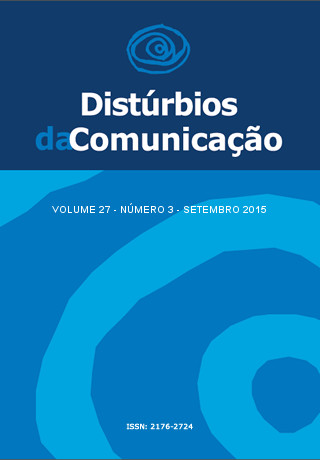Vocal self-perception of dysphonic children: the drawing as an analysis tool
Keywords:
self concept, child, design, dysphonia, voiceAbstract
Introduction: there are several resources that can be used to express thoughts, including the design, which mediated and organized by language, becomes a valuable tool for analysis of vocal perception. Objective: To analyze the vocal self-perception of dysphonic children from drawings. Material and Method: This is a case report, with analysis of microgenetic designs prepared by three children, aged 8-9 years old diagnosed with dysphonia. Results: Analyses of the drawings were categorized into two: the spelling mode used for the preparation of the design and the significance of graphic production in relation to vocal self-perception. As for the spelling mode all subjects used for designing a pen, with no color variation during development. Regarding the exposed self perception vocal parameters were vocal habits, loudness and voice quality. Conclusions: The designs proved to be effective for the representation of thought resources, even though the child’s psychic content is in training. In this sense, the graphical representation can be used as a tool to analyze children’s vocal self perception.Downloads
Download data is not yet available.
Metrics
Metrics Loading ...
Downloads
Published
2015-09-04
Issue
Section
Artigos
License
Copyright (c) 2015 Suzelaine Taize Stadler

This work is licensed under a Creative Commons Attribution 4.0 International License.









